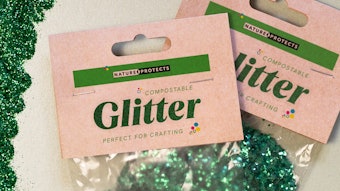Original posted by Perfumer & Flavorist.
Incorporating food ingredients into non-food products, particularly in the beauty and personal care segment, has been an ever-growing trend that has gained substantial momentum over the years. Because consumers are educated from food manufacturers regarding various ingredients and their associated health benefits, non-food manufacturers are capitalizing on this background knowledge by utilizing similar ingredients in their formulations. As consumers become more apprehensive of what foods they ingest due to health concerns and contamination scares, more manufacturers are opting to integrate more natural and nutritious formulations into their ingredient list. Non-food manufacturers have mimicked this same trend and have recognized that consumers are not only concerned with the foods they ingest, but they are also wary regarding the products they apply to their bodies. Consumers have revamped the mantra, “you are what you eat” to “you are what you apply” to non-food products; a concept that should be duly noted by manufacturers.
Prevalent Beauty Foods
Superfruits have been most commonly featured in the beauty and personal care sector due to their exceptionally high antioxidant content and their ability to contribute to overall skin health by scavenging free radicals. Blueberries and pomegranates are two of the more common superfuits, in addition to more exotic berries including arctic cloudberry, sea buckthorn and cranberry; all touted for their antioxidant content and their ability to be an excellent exfoliate. In the UK, Lumene utilized arctic cloudberry for its antiaging properties by introducing a Vitamin C Age Defying Beautifying Eye Cream.
Amazonian fruits, such as the ever-popular açai berry as well guarana are used in a multitude of CPG products, and the beauty and personal care sector is no exception. These fruits are not only striking to the consumer because of their exotic appeal, but they are primarily appealing due to the array of functionality they provide. The açai berry is categorized as the most antioxidant-rich food, being rich in skin essential functionality by providing various phytonutrients, mineral and vitamins. Similarly, guarana is known for its antimicrobial qualities and is featured in many anticellulite creams because it contains three times the amount of caffeine (an active ingredient that works to tighten blood vessels). In the United States, Lisa Hoffman Spa Bath launched a daily bath care kit utilizing açai oil, said to be a potent antiaging oil, and guarana extracts, claiming to stimulate circulation and energize the skin.
Pro/Prebiotics
Pro/prebiotics are primarily found in dairy products; however, they are starting to migrate into the beauty care segment. Both well-known for their digestive and immune system properties, probiotics are being utilized in skin care products for their AHA functions and their ability to enhance bioavailability, while prebiotics are being utilized to replenish “good” bacteria lost to environmental stressors. As an example, Face Boutique launched a facial moisturizer in the United Kingdom that incorporated probiotics in order to reduce breakouts.
Teas and Sweets
Other common foods seen in beauty and personal care are teas and sweets. Prevalent teas include white, green, red and honeybush, all known for their antioxidant and anti-inflammatory properties. As regards sweets, licorice is utilized for its skin clearing/brightening efficacies while almond is used for its ability to moisturize and exfoliate the skin as well as provide sun protection due to its high vitamin E content. As an example, Dr. Michelle Copeland incorporated licorice into its antiwrinkle cream in the United States, intended to help reduce the appearance of fine lines and wrinkles, thus avoiding the need for Botox injections. Another sweet that is making a visible appearance in the beauty and personal care segment is chocolate. Besides being a favorite craving-satisfier, chocolate is an excellent and natural antioxidant source. Various skin care manufacturers have used the cocoa bean’s lubricating properties in its moisturizing lotions. As an example, Montagne Jeunesse introduced a Chocolate Mud Masque in the Netherlands, boasting its creamy natural ingredients that help unblock pores and moisturize the skin.
Herbal Formulations
According to Mintel GNPD, all natural claims for beauty, personal and household products grew 95% from 2006–2008, while botanical/herbal claims increased 74% during the same time period. Most of the products possessing these claims featured various health-promoting herbs including lavender, valerian and chamomile, which were publicized for their calming and soothing properties, in addition to lemon and mint that were utilized for their energizing and revitalizing qualities. In Argentina, VM Beauty released a Sweet Dreams Mist for the body and face containing valerian extracts, lavender, thyme, rosemary and deroli scents meant to produce a feeling of tranquility. Similarly, in the United Kingdom, Orifilame launched a Sleep Easy Body Cream formulated with lavender and chamomile aimed to relax the senses while moisturizing the skin. The cream is recommended to be used at bedtime to aid in a good night’s sleep.
Mintel Global New Products Database (GNPD) tracks new product launches, trends and innovations internationally. For more information, click here or call 1-312-932-0600.










